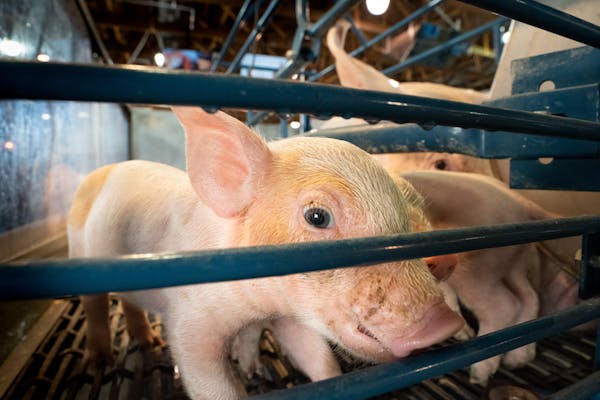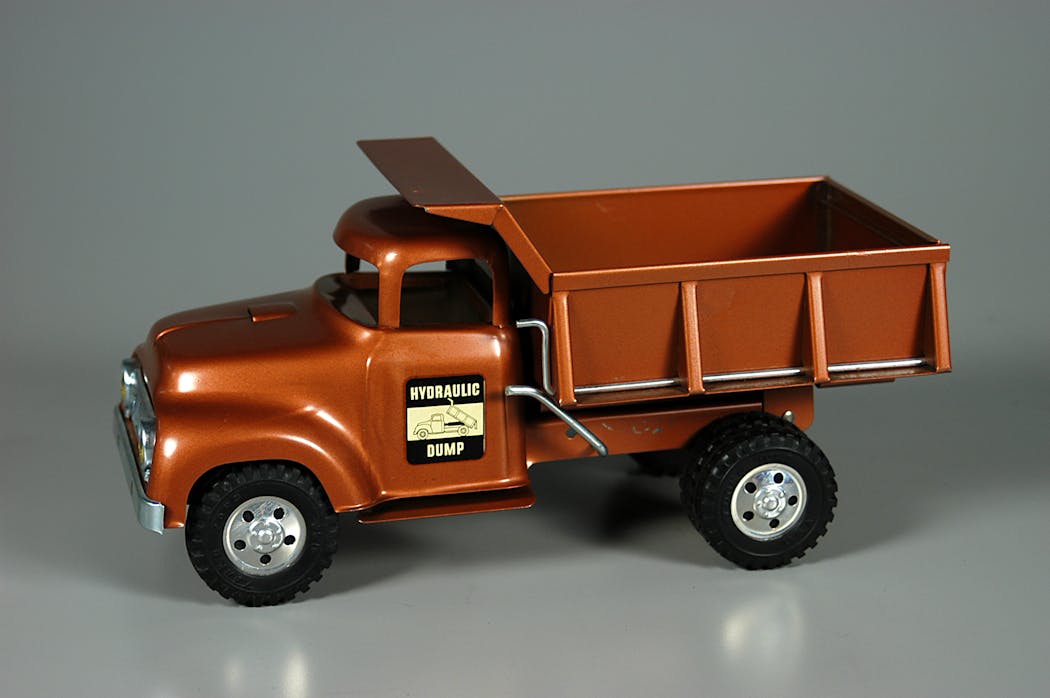How did Tonka trucks get their start in Minnesota?
Listen and subscribe to our podcast: Via Apple Podcasts | Spotify | Stitcher
Children's infatuation with marbles and wooden toys was fading in the late 1940s. And the Space Race era of imaginative toy rockets and robots had not yet begun.
This was the moment when a trio of craftsmen in a Twin Cities suburb launched a new type of toy — one rooted in realism. Their company, Tonka Toys, pioneered the idea of making lifelike models of heavy-duty transportation and utility trucks for kids, creating a brand that endures today.
Tonka's models became must-have toys in the 1950s and 1960s, propelling the Minnesota-based company to global success by the 1970s. It is now a subsidiary of toy giant Hasbro.
But how did such a well-known brand get its start in Mound, a small city about 20 miles west of Minneapolis? A reader sought answers from Curious Minnesota, the Star Tribune's reader-powered reporting project.
"They wanted to create something that was realistic and something kids would see out in the real world," said Michelle Parnett-Dwyer, a curator at the Strong, the New York not-for-profit organization that operates the National Museum of Play.
Historical information provided by the Strong, the Westonka Historical Society in Mound, Hasbro and a former employee shows that Tonka's beginnings were rich with innovation and a willingness to venture into unknown territory.
'A special toy'
The company began in 1946 when founders Al Tesch, Avery Crounse and Lynn Baker created Mound Metalcraft to make metal items like tie racks and gardening tools. The three operated the business inside a former schoolhouse in Mound that had been used during the World War II to make ammunition boxes.
In 1947, Mound Metalcraft began manufacturing metal toys based on a toy steam shovel designed by Streater Industries, a Minnesota company later known for its retail merchandising displays. That early Streater design was made using the wood bottom of ammunition boxes and recycled meat cans, said Ronald Pauly, a former Tonka employee who lives in Mound.
The company found it was selling more toys than metal tie racks and tools. So it gradually switched to predominantly toy manufacturing, with six employees assembling just two models, a steam shovel and a crane. Different areas of the schoolhouse handled metal stamping, painting, tool storage, assembly and operations.
Mound Metalcraft became Tonka Toys Inc. in 1948, named after nearby Lake Minnetonka. The original logo featured three birds flying above blue waves over the lake — a nod to the three founders.
"A youngster really had to use his imagination with the toys on the market," Baker, a former automobile distributor in Minneapolis, told the Minneapolis Tribune in 1953. "We decided to make scale model miniatures that looked just like the trucks a little boy might see passing his house everyday."
Baker decided early in the business there was no future in wooden toys. Tonka had become the first company to manufacture, at scale, metal toy trucks.
While they were more expensive than other toys, the cost was worth it for many parents.
"People were willing to make the investment because the quality was so good," Parnett-Dwyer said. "It was a special toy to get."
A new era
While the Tonka brand was steadily growing, its founders all left the company.
In 1952, Tesch and Crounse left when the company's board of directors chose not to accept an offer from the state of Tennessee to move the company there, despite tax incentives and operational savings. In 1961, Baker left the company due to health problems.
Under new leadership in the mid-1960s, the company reached an agreement with Mercury Tool and Stamping in Toronto to manufacture and distribute Tonka Toys worldwide. It acquired Mell Manufacturing in Chicago, a builder of barbeque grills, and Gresen Hydraulic Valves of Minneapolis.
The expansion coincided with the introduction of the Mighty Tonka Dump Truck, which became the company's signature toy. It had 4 ¾-inch rubber tires and stretched nearly 19 inches. It cost $4.99.
In 1968, the company moved headquarters from Mound to offices just west of Minneapolis. Between 1974 and 1975, the company reached $102.1 million in annual sales, and had facilities in eight countries and the Mound plant employing over 2,000 people.
"No one could really compete with that back then," said Parnett-Dwyer said, adding the company produced between 13 million and 16 million toy trucks a year at this time.
In 1983, Tonka closed the Mound plant and moved all manufacturing to El Paso, Texas, and Juarez, Mexico. Tonka was acquired by Hasbro in 1991.
If you'd like to submit a Curious Minnesota question, fill out the form below:
Read more Curious Minnesota stories:
Why do Minnesotans play Duck, Duck, Gray Duck instead of Duck, Duck, Goose?
Did Ford make millions of windows from sand mined beneath its plant?
What is the largest machine in Minnesota?
Why do so many Fortune 500 companies call Minnesota home?
What happened to Minneapolis' famous 'Mighty Kimball' organ?
How the heck did Minnesota end up with a state muffin?







